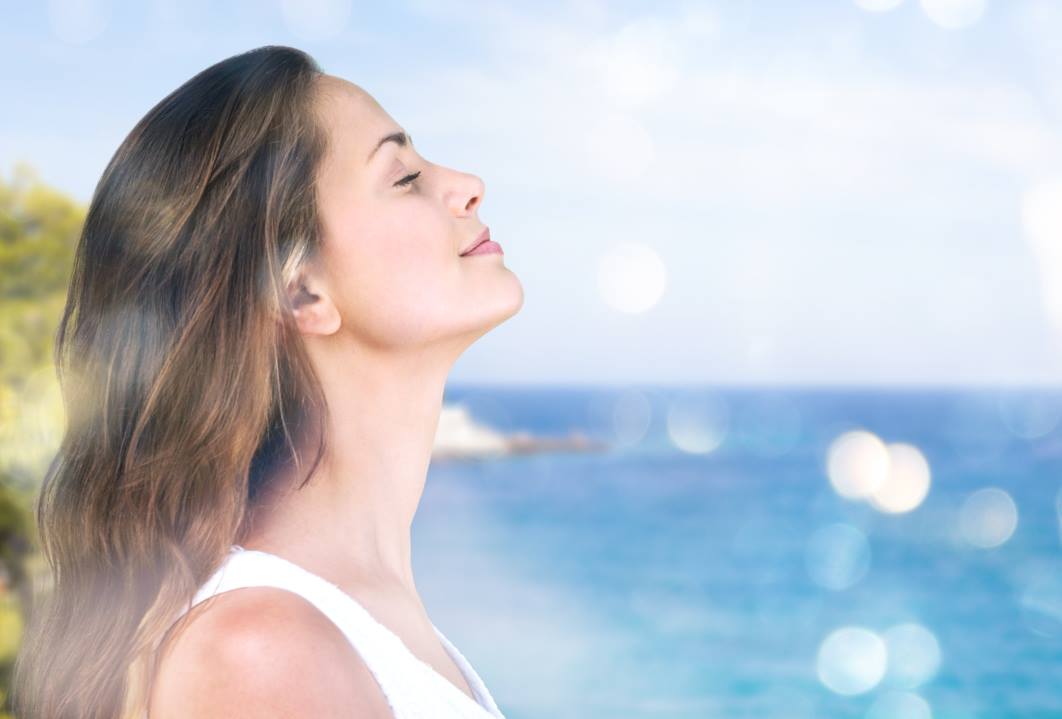In our quest to understand and enhance mental health, we often overlook the profound influence of ambient lighting. “The Science of Calming Lights: How Light Impacts Anxiety Levels” explores a captivating synergy between environmental lighting and our emotional well-being. At a time when anxiety disorders are increasingly prevalent, it becomes imperative to examine the science behind the calming effect of specific lighting conditions and the potential they hold in alleviating anxiety. In this exploration, we delve into the intricate relationship between light and anxiety levels, unveiling the biological, psychological, and practical dimensions of this unique connection.
Understanding Anxiety: Neurological and Psychological Aspect
Understanding anxiety requires a multifaceted approach that delves into both neurological and psychological dimensions. Neurologically, anxiety is intricately tied to the brain’s intricate web of neurotransmitters and neural circuits. Specifically, the amygdala, a region deep within the brain, plays a pivotal role in processing emotions, particularly fear and anxiety. It acts as a sort of emotional alarm system, detecting potential threats in the environment and triggering the body’s stress response. When this system becomes overly sensitive or dysregulated, it can lead to heightened anxiety levels, even in situations that aren’t objectively threatening. Additionally, neurotransmitters like serotonin, which are crucial for regulating mood and emotions, are implicated in anxiety. Low levels of serotonin have been associated with an increased susceptibility to anxiety disorders.
Psychologically, anxiety encompasses a broad spectrum of experiences, from everyday worries to debilitating disorders. It’s important to recognize that a certain level of anxiety is a normal and adaptive response to stressors. However, when anxiety becomes excessive, pervasive, and interferes with daily functioning, it may be indicative of an anxiety disorder. These conditions can manifest in various forms, including generalized anxiety disorder, panic disorder, social anxiety disorder, and specific phobias. Psychological factors such as past traumatic experiences, maladaptive thought patterns, and personality traits also play a significant role in the development and exacerbation of anxiety. By examining anxiety from both neurological and psychological angles, we gain a comprehensive understanding of this complex phenomenon, paving the way for more effective interventions and treatments.
The Human Circadian Rhythm: Light’s Influence on Our Biological Clock
The human circadian rhythm, often referred to as our internal body clock, orchestrates a wide array of physiological and behavioral processes over the course of a 24-hour cycle. This intricate system is finely tuned to the natural ebb and flow of light and darkness in our environment. Light serves as the primary external cue that synchronizes our internal clock with the external world. Exposure to light, especially in the morning, signals to our bodies that it’s time to be awake and alert. It triggers the suppression of melatonin, a hormone that promotes sleep, while simultaneously promoting the release of cortisol, which helps us feel awake and energized. This finely-tuned dance between light exposure and hormonal fluctuations regulates not only our sleep-wake cycle but also influences aspects of mood, cognition, and even metabolic functions. Disruptions to this delicate balance, often seen in conditions like shift work or in areas with limited natural light during certain seasons, can lead to circadian rhythm disorders and exacerbate mental health issues, including anxiety. Understanding this profound interaction between light and our biological clock provides a crucial foundation for harnessing the therapeutic potential of calming lights for anxiety management.
Light and Mood Regulation: The Science Behind It
The interplay between light and mood regulation is a testament to the intricate dance between environmental stimuli and our neural processes. Light, as a powerful external cue, exerts a profound influence on the production and release of neurotransmitters that govern our emotional states. Serotonin, often hailed as the “feel-good” neurotransmitter, is particularly sensitive to light exposure. When we bask in natural or artificial light, especially during the morning hours, our bodies kickstart the production of serotonin. This surge of serotonin enhances feelings of well-being, contentment, and even elation. It’s no wonder that exposure to bright light is associated with improved mood, making it a crucial factor in mitigating symptoms of anxiety and depression. On the flip side, reduced exposure to light, especially during the darker months of the year, can lead to lowered serotonin levels, potentially contributing to the onset or exacerbation of anxiety disorders.
Conversely, light’s influence extends to melatonin, a hormone pivotal in regulating our sleep-wake cycle. Melatonin production is inhibited by exposure to light, particularly the blue wavelengths found in natural daylight. This suppression during daytime hours keeps us alert and awake. However, as evening approaches and natural light diminishes, melatonin levels rise, signaling the body that it’s time to wind down and prepare for sleep. This delicate balance in melatonin secretion highlights the profound impact that light, or the lack thereof, has on our circadian rhythm and overall mood. Understanding this intricate interplay provides a compelling rationale for harnessing the therapeutic potential of calming lights, which can strategically modulate mood-regulating neurotransmitters to alleviate anxiety and improve overall mental well-being. (1)
The Psychology of Color Temperature: Warm vs. Cool Light
The psychology of color temperature delves into how different hues and tones of light can evoke distinct emotional responses. Warm light, characterized by a reddish or yellowish hue, tends to create a cozy and comforting atmosphere. This type of lighting is often associated with feelings of relaxation, safety, and intimacy. It’s particularly effective in creating spaces that encourage rest and calmness, making it an ideal choice for bedrooms, living rooms, and spaces where individuals seek solace and tranquility. On the other hand, cool light, with its bluish undertones, imparts a sense of alertness and focus. It mimics the natural light of daytime, making it conducive to productivity and tasks that require concentration. Areas such as offices, study rooms, and workspaces benefit from the invigorating effects of cool light, as it helps maintain alertness and mental acuity.
Explaining Warm and Cool Light:
Warm Light (Reddish-Yellow):
- Emotional Response: Comfort, Relaxation, Coziness
- Applications: Bedrooms, Living Rooms, Reading Nooks
- Effect: Invokes a sense of calm and comfort, ideal for spaces where relaxation is prioritized.
Cool Light (Bluish):
- Emotional Response: Alertness, Focus, Productivity
- Applications: Offices, Study Areas, Kitchens
- Effect: Enhances concentration and alertness, making it suitable for spaces where mental engagement is key.
Understanding the psychological impact of warm and cool light empowers individuals to tailor their environments to suit specific needs and moods. By strategically choosing the right color temperature, one can create spaces that enhance well-being and promote mental health. This awareness is particularly valuable in the context of anxiety relief, as the choice of lighting can significantly influence the overall ambiance and comfort of a space.
Natural vs. Artificial Light: Comparative Impact on Anxiety
The comparative impact of natural and artificial light on anxiety underscores the profound influence of our environment on our mental well-being. Natural light, with its dynamic and ever-changing qualities, is a potent mood enhancer. Exposure to natural sunlight triggers the release of serotonin, promoting feelings of positivity and well-being. Additionally, natural light helps regulate our circadian rhythms, ensuring a healthy sleep-wake cycle. It fosters a sense of connection to the outdoors and the wider world, which can have a calming effect on individuals. On the other hand, artificial light, while essential for modern living, often falls short in replicating the full spectrum and intensity of natural light. However, when carefully designed and selected, artificial lighting can still provide significant benefits for anxiety relief. It can be tailored to create specific atmospheres and moods conducive to relaxation and calmness. (2)
Comparative Impact of Natural and Artificial Light:
Natural Light:
- Effect on Anxiety: Natural light has a direct positive impact on anxiety levels. Exposure to sunlight triggers the release of serotonin, enhancing mood and reducing symptoms of anxiety.
- Circadian Rhythm Regulation: Helps regulate the body’s internal clock, promoting a healthy sleep-wake cycle and overall well-being.
- Connection to Nature: Enhances a sense of connection to the natural world, promoting relaxation and reducing stress.
Artificial Light:
- Effect on Anxiety: While not as potent as natural light, carefully designed artificial lighting can still positively influence mood and alleviate anxiety when used strategically.
- Customization and Control: Offers the ability to tailor lighting conditions to create specific atmospheres conducive to relaxation and calmness.
- Supplementing Natural Light: Especially in areas with limited natural light, artificial lighting plays a vital role in maintaining mental well-being.
Balancing the benefits of natural and artificial light is key to creating environments that support mental health. Incorporating elements of both can optimize lighting conditions for anxiety relief and overall well-being. Understanding the nuanced impact of each type of lighting allows individuals to make informed choices about their lighting environments.
Conclusion
In conclusion, the intricate interplay between light and our mental well-being is a testament to the profound influence of our environment on our emotional states. Through the exploration of various facets, from the neurological and psychological aspects of anxiety to the impact of different types of lighting, we have unveiled a captivating connection. Understanding how light influences our circadian rhythms, regulates mood-regulating neurotransmitters and shapes our emotional responses provides a powerful tool in the quest for anxiety relief.
Moreover, recognizing the significance of color temperature and the benefits of both natural and artificial light allows us to tailor our environments to promote relaxation and well-being.
The potential for calming lights to enhance mental health is not only scientifically grounded but also highly practical, offering a tangible pathway to alleviating anxiety and improving overall quality of life. As we continue to delve deeper into this dynamic field, it becomes evident that the science of calming lights is poised to play a pivotal role in the future of mental health care, offering hope and solace to those navigating the complex terrain of anxiety disorders.

Speaks from heart, always too passionate and driven by emotions. Spins the words with kindness & sharpness, intriguing your ever-inscrutable minds.



